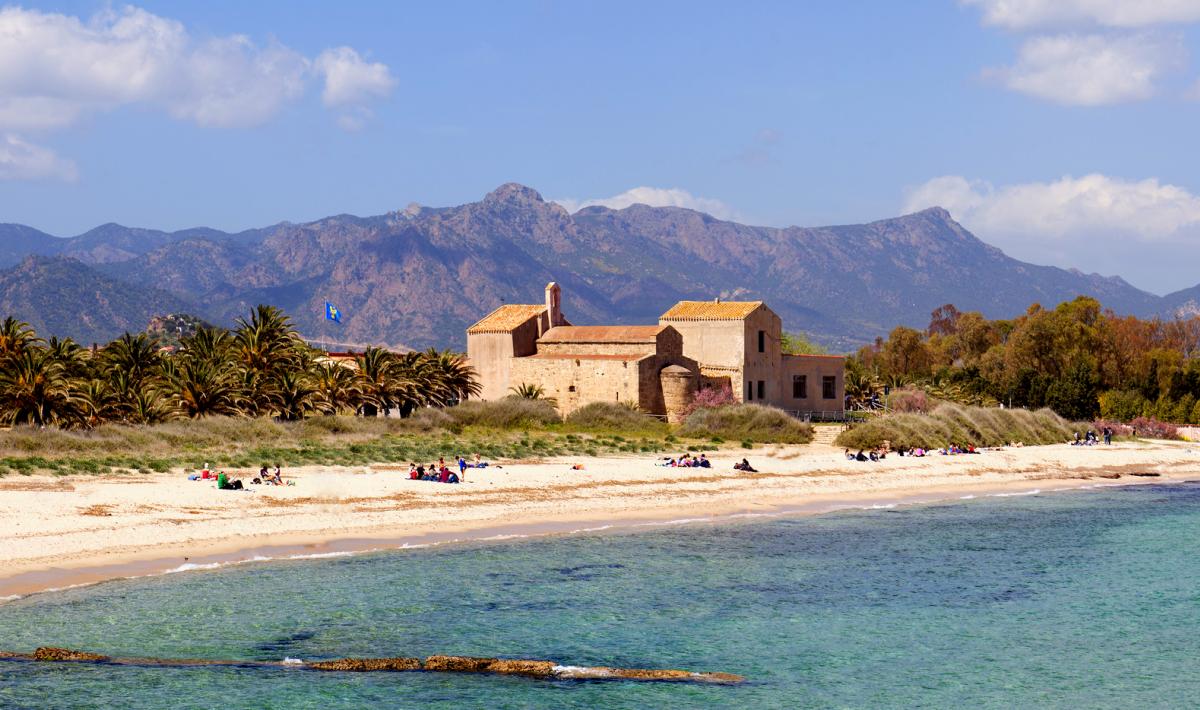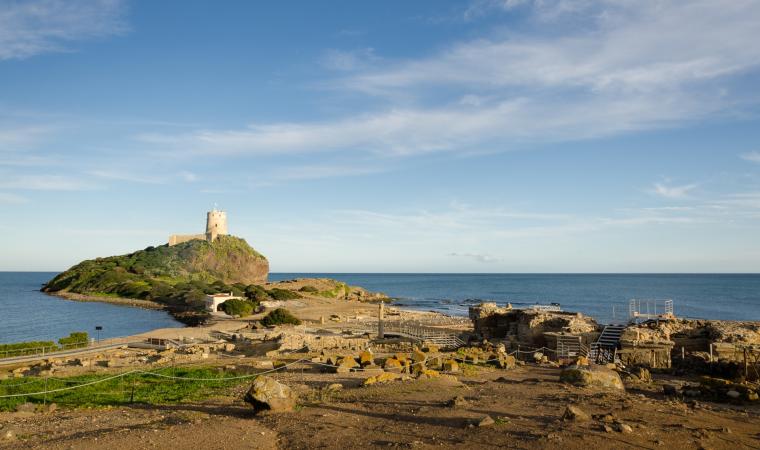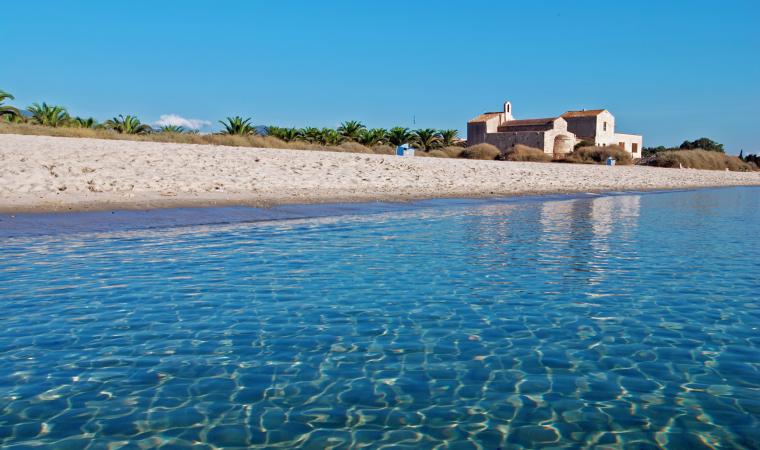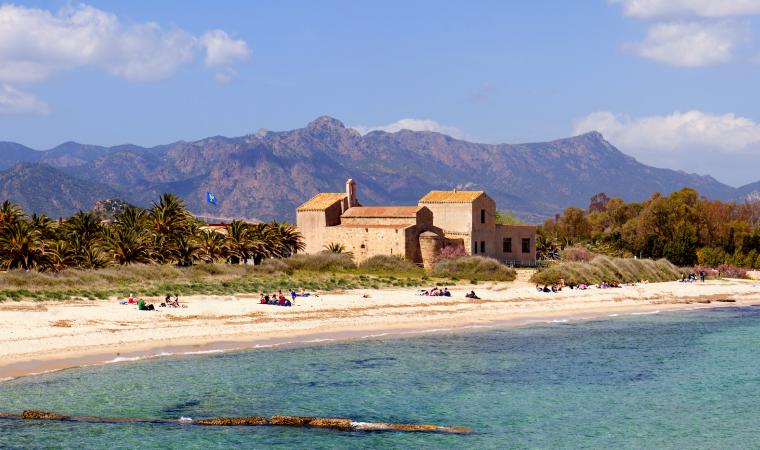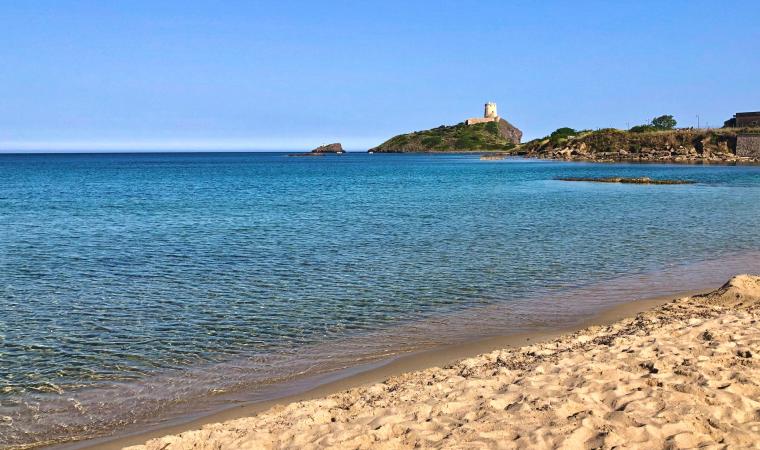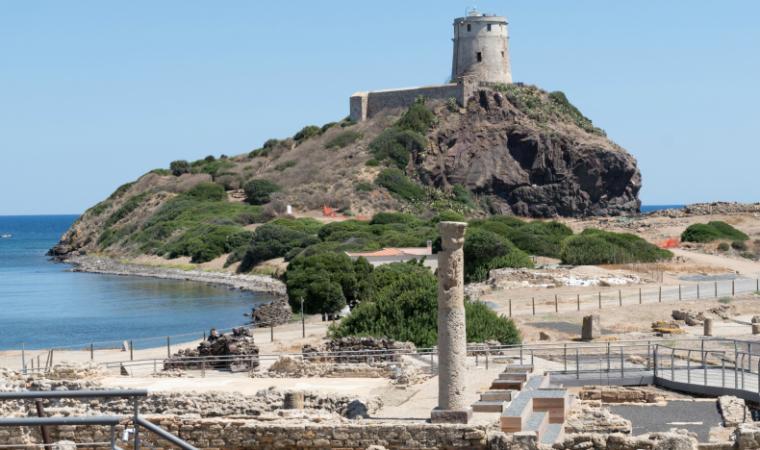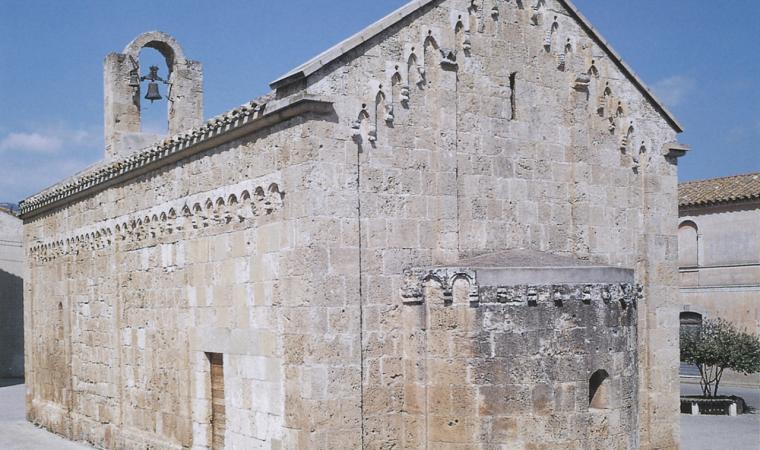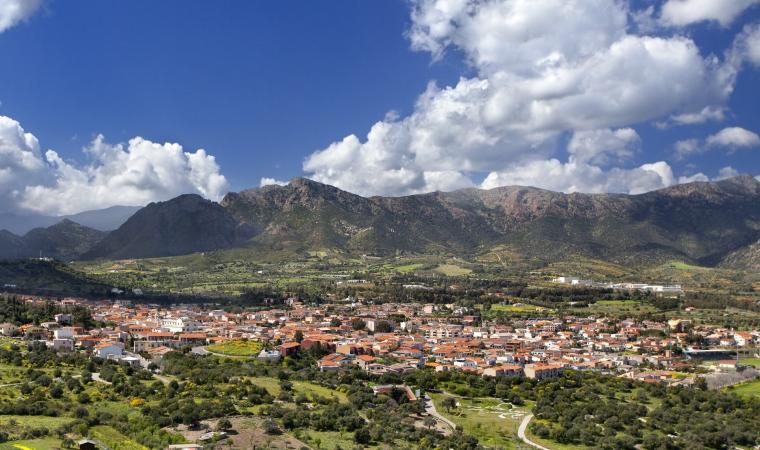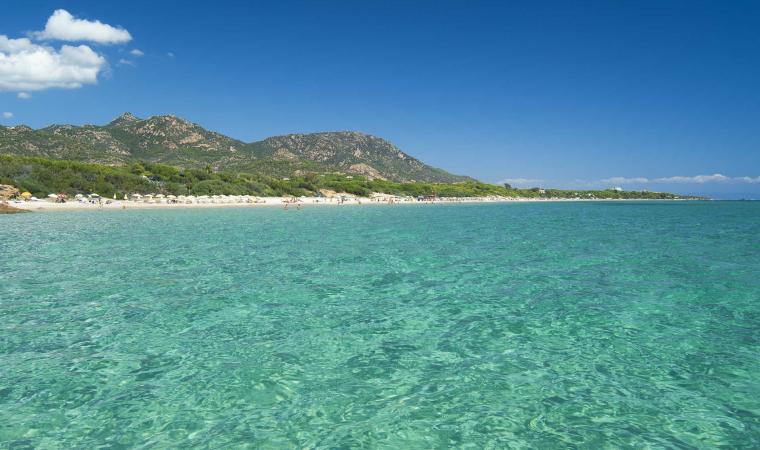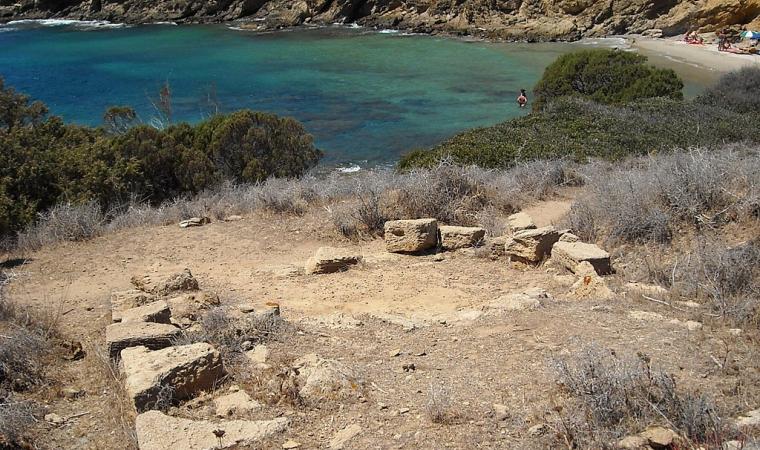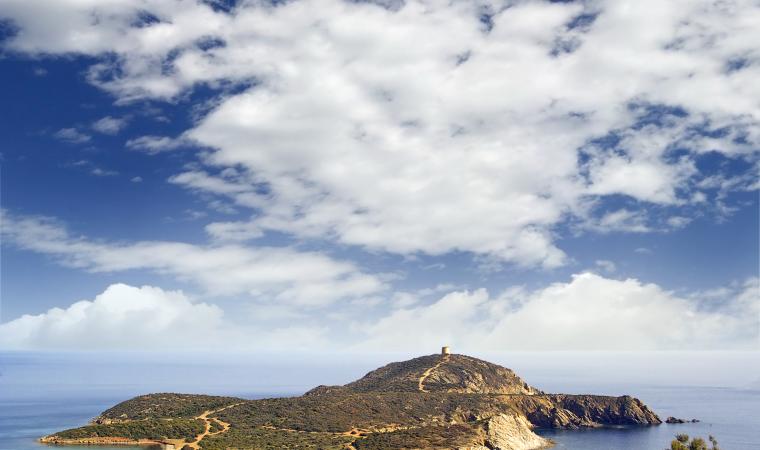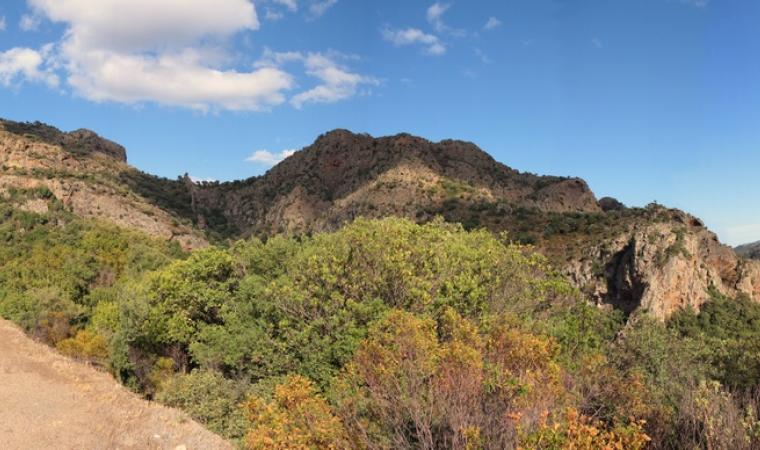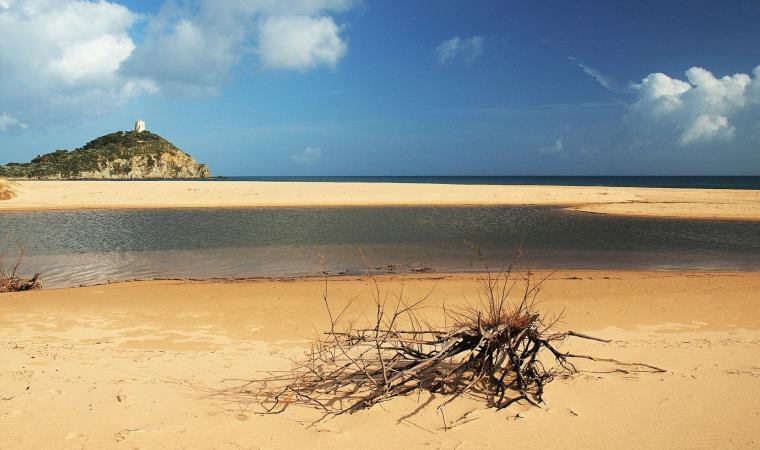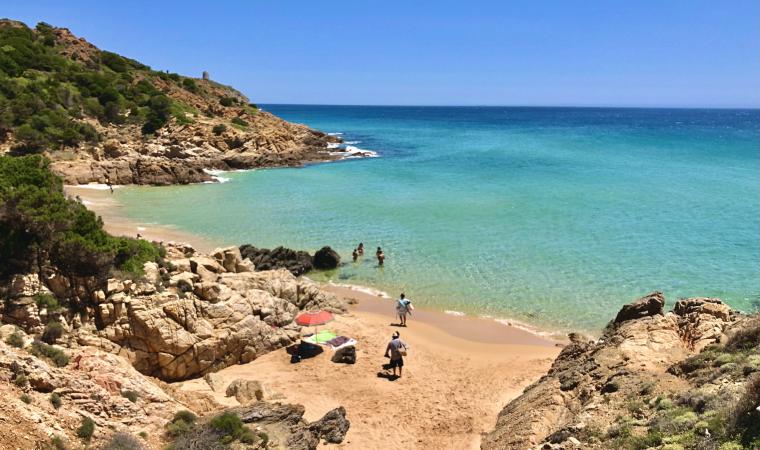It all began in 303 CE when the Romans executed the death sentence of Efisio, a common soldier guilty of having converted to and professed Christianity. In the high Middle Ages, a sanctuary was built on the exact spot of his martyrdom. Thus the legend began, with the history of the church of Sant'Efisio later taking on more meaning in the late 11th century when it is donated - together with a variety of other places of worship - to the order of the Victorine monks of Marseilles, who rebuilt the sanctuary in the Romanesque style in vogue at the time, reusing sandstone and limestone ashlars from the ruins of the nearby ancient city of Nora.
The church stands next to the lovely Nora beach some 4 km from Pula and owes part of its allure to its position and vicinity to the beach. The interior of the church exudes an evocative and mystical atmosphere thanks to the dim rays of light that filter in from the oculus above the apse and to the long crypt dug under the presbytery, where there is a domed structure which, according to legend, corresponds to exact place the saint was killed and buried.
The church features three barrel-vaulted naves with soffits, divided by arches set on sturdy pillars. On the external wall of the south side, you will notice the inclusion of a Phoenician-Punic funerary stele. The portico and atrium on the façade were added in the 17th-18th century, probably to shelter the growing numbers of pilgrims from the sun. The original façade stood at the bell tower.
Worship of St. Efisio links this little church to Cagliari, to the medieval Stampace district where there is another church dedicated to the martyr and, following tradition, it too built on a symbolic place. The crypt below seems to have been where the saint was imprisoned before being taken to Nora for execution. From there, starting in the middle of the 17th century, every year without fail, the inhabitants of the capital make good on a vow they made to Sant'Efisio following the end of an epidemic of plague. Over the centuries, the pilgrimage has become one of the most majestic processions in Italy when thousands of faithful flocks from all over Sardinia to accompany a chariot bearing the simulacrum of the saint. It all starts on May 1st and arrives in Nora the following day. On 3 May the celebratory rites take place on the beach and the following day, late in the evening, Sant'Efisio, escorted by the immense procession, is brought back to Stampace.
A few dozen metres away you can continue your cultural tour at the Nora archaeological area. It was originally a Phoenician port and market, of which only the tophet remains, then an important Punic town, evident from the necropolis, and, finally, a flourishing urbs romana. Of the later you can still see some remains of the thermal baths and amphitheatre, the piazza of the forum and the “house with the tetrastyle atrium” decorated with lovely mosaics.

